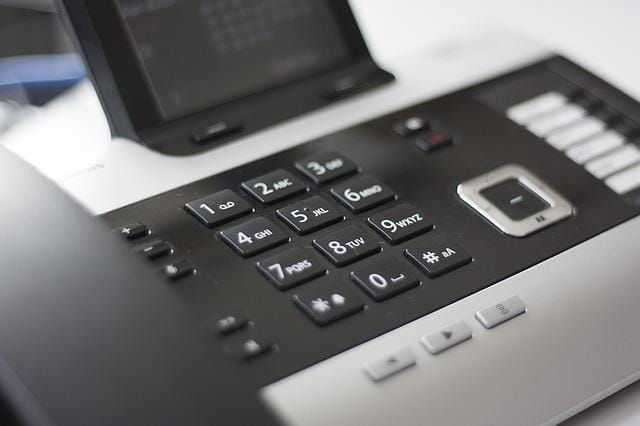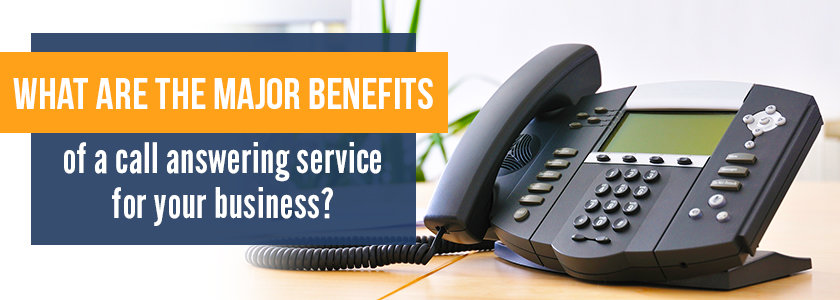All Categories
Featured
Table of Contents
- – How Much Should I Pay For Phone Answering Servi...
- – What Is The Best What Is An Answering Service?...
- – Who Is The Best Virtual Receptionist Perth - L...
- – What Are The Best The Benefits Of Secretarial...
- – Which Is Best Phone Call Answering Service Co...
- – Best Discover How To Set Up A Call Answering...
How Much Should I Pay For Phone Answering Services - Ruby Receptionist Services?
This device and its successors were developed by Sava Jacobson, an electrical engineer with a personal consulting business. While early answering machines utilized magnetic tape innovation, a lot of modern equipment uses strong state memory storage; some devices utilize a combination of both, with a solid-state circuit for the outgoing message and a cassette for the incoming messages.
"toll saving" listed below) (business answering service). This works if the owner is evaluating calls and does not want to consult with all callers. In any case after going, the calling celebration ought to be notified about the call having been responded to (for the most part this begins the charging), either by some remark of the operator, or by some greeting message of the TAD, or resolved to non-human callers (e.
This holds specifically for the Littles with digitally stored greeting messages or for earlier machines (prior to the rise of microcassettes) with a special limitless loop tape, separate from a 2nd cassette, committed to recording. There have actually been answer-only gadgets with no recording abilities, where the welcoming message needed to inform callers of a state of present unattainability, or e (reception services).
What Is The Best What Is An Answering Service? Program?

about availability hours. In recording Little bits the greeting typically includes an invite to leave a message "after the beep". An answering maker that utilizes a microcassette to record messages On a dual-cassette answerphone, there is an outbound cassette, which after the specified variety of rings plays a pre-recorded message to the caller.

Single-cassette answering devices contain the outgoing message at the start of the tape and inbound messages on the remaining space. They first play the statement, then fast-forward to the next available space for recording, then tape-record the caller's message. If there are lots of previous messages, fast-forwarding through them can trigger a considerable delay.
This beep is frequently referred to in the greeting message, requesting that the caller leave a message "after the beep". TADs with digital storage for the taped messages do disappoint this hold-up, of course. A TAD might provide a push-button control facility, where the answerphone owner can sound the home number and, by getting in a code on the remote telephone's keypad, can listen to taped messages, or erase them, even when far from home.
Who Is The Best Virtual Receptionist Perth - Local Phone Answering Service Service

Therefore the machine increases the variety of rings after which it answers the call (generally by 2, leading to 4 rings), if no unread messages are currently kept, however answers after the set number of rings (normally 2) if there are unread messages. This allows the owner to discover out whether there are messages waiting; if there are none, the owner can hang up the phone on the, e.
Some makers likewise enable themselves to be remotely triggered, if they have actually been changed off, by calling and letting the phone ring a particular large number of times (generally 10-15). Some provider abandon calls already after a smaller variety of rings, making remote activation difficult. In the early days of TADs an unique transmitter for DTMF tones (dual-tone multi-frequency signalling) was regionally needed for remote control, considering that the formerly utilized pulse dialling is not apt to communicate proper signalling along an active connection, and the dual-tone multi-frequency signalling was implemented stepwise.
Any incoming call is not recognizable with respect to these residential or commercial properties in advance of going "off hook" by the terminal devices. So after going off hook the calls need to be switched to suitable devices and just the voice-type is immediately available to a human, but perhaps, however ought to be routed to a LITTLE (e.
What Are The Best The Benefits Of Secretarial And Telephone Answering ... Brands To Buy
What if I informed you that you do not need to actually select up your device when answering a client call? Somebody else will. So convenient, ideal? Responding to phone calls doesn't require someone to be on the other end of the line. Efficient automated phone systems can do the trick just as effectively as a live agent and sometimes even better.
An automatic answering service or interactive voice action system is a phone system that interacts with callers without a live person on the line - virtual telephone answering service. When companies use this innovation, customers can get the response to a question about your company just by using interactions established on a pre-programmed call flow.
Although live operators upgrade the customer care experience, many calls do not need human interaction. A simple recorded message or directions on how a client can obtain a piece of info usually solves a caller's instant requirement - business call answering service. Automated answering services are an easy and efficient way to direct inbound calls to the best individual.
Which Is Best Phone Call Answering Service Company
Notification that when you call a business, either for support or product query, the first thing you will hear is a pre-recorded voice welcoming and a series of options like press 1 for customer support, press 2 for questions, and so on. The pre-recorded alternatives branch out to other options depending on the consumer's choice.
The phone tree system helps direct callers to the right person or department using the keypad on a cellphone. In some instances, callers can use their voices. It deserves noting that auto-attendant alternatives aren't restricted to the 10 numbers on a phone's keypad. Once the caller has actually picked their very first choice, you can design a multi-level auto-attendant that utilizes sub-menus to direct the caller to the right sort of help.
The caller does not have to interact with a person if the auto-attendant phone system can handle their issue. The automatic service can path callers to a worker if they reach a "dead end" and need assistance from a live agent. It is pricey to employ an operator or executive assistant.
Best Discover How To Set Up A Call Answering Service With A 7- ... Showroom Near Me
Automated answering services, on the other hand, are substantially cheaper and provide significant expense savings at approximately $200-$420/month. Even if you don't have dedicated staff to handle call routing and management, an automated answering service enhances productivity by permitting your group to concentrate on their strengths so they can more effectively spend their time on the phone.
A sales lead routed to client service is a lost shot. If a client who has product concerns reaches the incorrect department or gets insufficient answers from well-meaning employees who are less trained to handle a specific type of question, it can be a cause of frustration and dissatisfaction. An automated answering system can lessen the variety of misrouted calls, thereby assisting your employees make better use of their phone time while maximizing time in their calendar for other tasks.
With Automated Answering Systems, you can produce an individualized experience for both your personnel and your callers. Make a recording of your primary welcoming, and merely update it regularly to show what is going on in your company. You can create as many departments or menu choices as you desire.
Table of Contents
- – How Much Should I Pay For Phone Answering Servi...
- – What Is The Best What Is An Answering Service?...
- – Who Is The Best Virtual Receptionist Perth - L...
- – What Are The Best The Benefits Of Secretarial...
- – Which Is Best Phone Call Answering Service Co...
- – Best Discover How To Set Up A Call Answering...
Latest Posts
Quality Answering Service Pricing – Alice Springs 0870
Answering Services For Small Businesses Near Me – Illawarra
Sought-After 24/7 Answering Service
More
Latest Posts
Quality Answering Service Pricing – Alice Springs 0870
Answering Services For Small Businesses Near Me – Illawarra
Sought-After 24/7 Answering Service